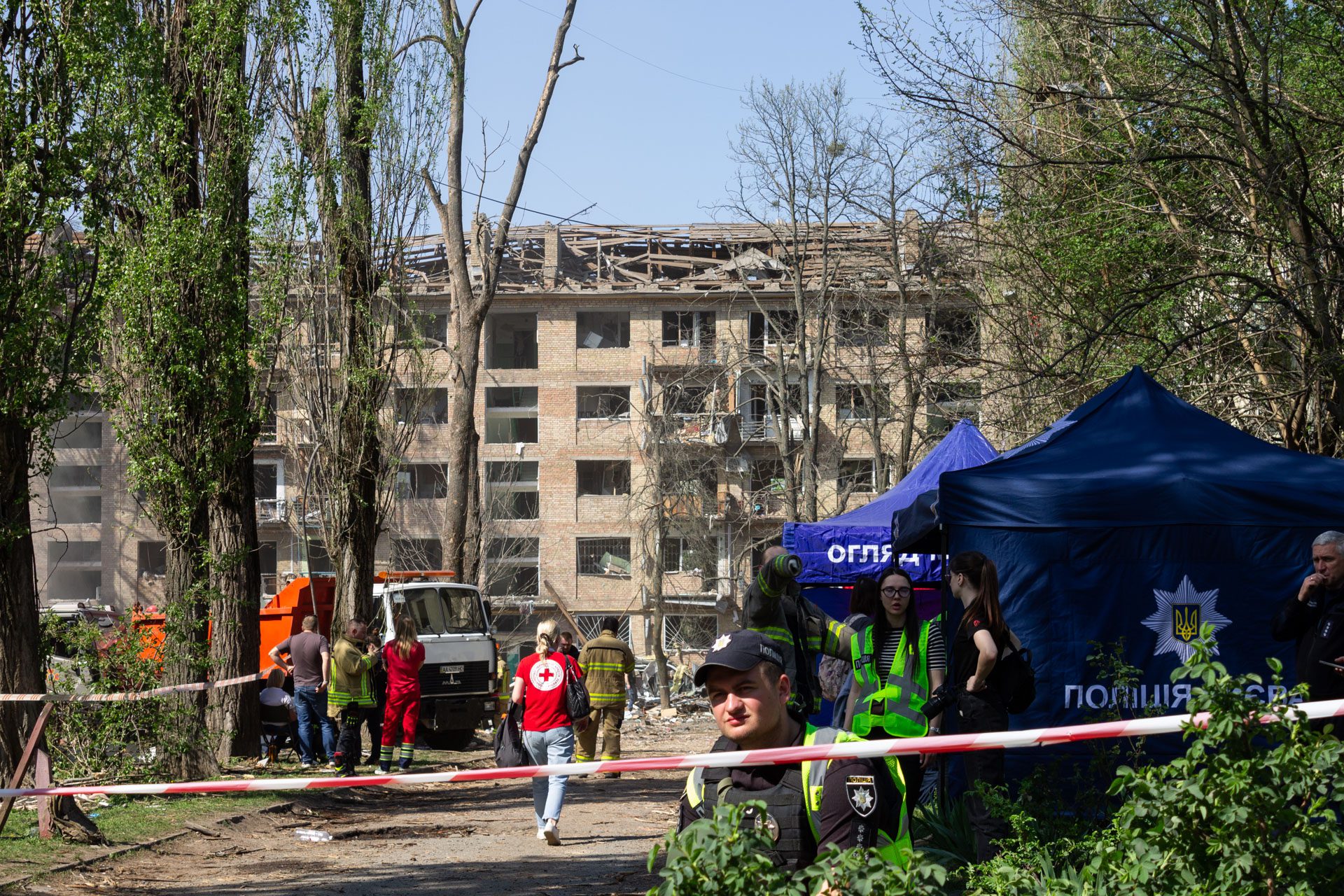 Wendy Wei for Borderless Magazine
Wendy Wei for Borderless MagazineChicago’s Ukrainian diaspora has funded millions to reconstruct bombed communities. But as some humanitarian workers pivot from humanitarian work to military action, volunteers face hard questions about effective resistance.
This reporting was supported by the International Women’s Media Foundation’s Women on the Ground: Reporting from Ukraine’s Unseen Frontlines Initiative in partnership with the Howard G. Buffett Foundation.
In the basement of a secret location in Kyiv, Kseniia Kalmus, 36, has trained hundreds of volunteers to make drones. Serving as headquarters for her workshop, KLYN Drones, the singular room is modest but lined floor-to-ceiling with stacks of drones in various stages of assembly, their multi-colored parts glittering like insects.
A Ukrainian flag is wrapped around a support pillar in the workshop, which serves as half den, half manufacturing hub.
News that puts power under the spotlight and communities at the center.
Sign up for our free newsletter and get updates twice a week.
Three years ago, Kalmus, a florist by trade, was rebuilding bombed-out roofs on the frontlines of the Russian full-scale invasion of Ukraine. She was an early partner with Ukraine Trust Chain, a volunteer network run from Daniil Cherkasskiy’s Evanston apartment since 2022. It has channeled over $10 million from Chicago’s Ukrainian diaspora to communities under fire in Ukraine. The artistry of her rebuilding work earned recognition by the Royal Academy of Arts in 2024 and the Venice Biennale in 2025.
But when Russian bombs destroyed her reconstruction projects for the second time in May 2024, Kalmus quit humanitarian aid with Trust Chain to focus on weapons manufacturing, specifically first-person-view drones. Today, her pitch to donors is frank: “A $340 drone disabling a $1.2 [million] Russian tank – that’s 3,600 [times] the bang for your buck.”
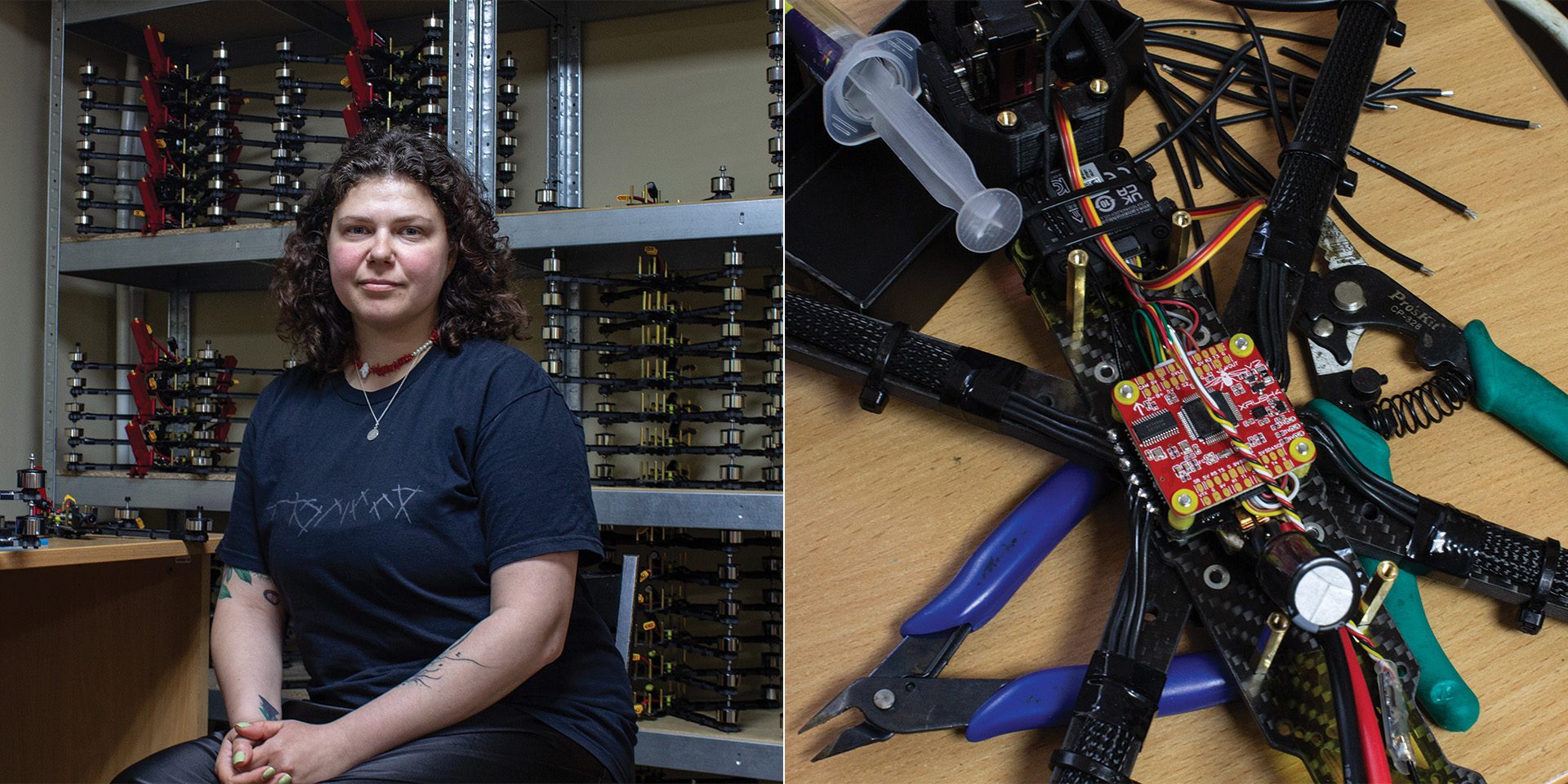
Kalmus’s shift to prioritizing military action over civil aid reflects a broader question confronting volunteers in Chicago and Ukraine as the war with Russia drags into its fourth year: Is it enough to rescue and rebuild when the destruction never stops?
Borderless Magazine’s Kyiv correspondent spoke with Trust Chain volunteers across Ukraine and Chicago to explore how volunteer work during prolonged conflict has reshaped their approach to resistance on the frontlines and abroad.
The Online Connection
As Russian forces reached Kyiv’s city limits in late February 2022, Natalia Mitsuta tore through bombed streets in her white Kia hatchback, delivering medication to elderly residents trapped in their apartments. Between supply runs, she scoured Telegram group chats and Facebook feeds, responding to requests from strangers for prescriptions or food and purchasing them with her own money.
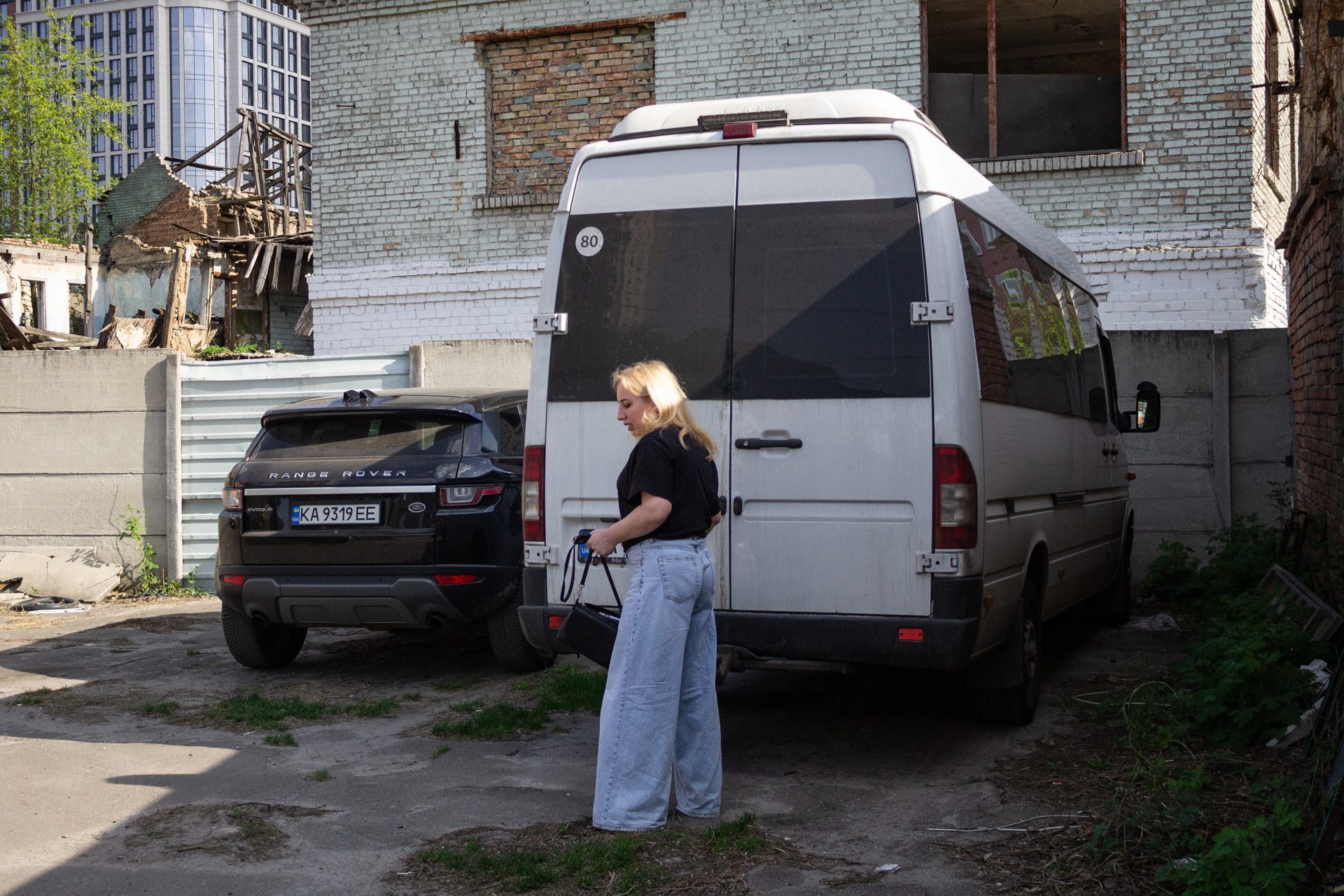
About five thousand miles away in Evanston, Cherkasskiy, 42, was also glued to his phone, consuming every bit of information about Russia’s invasion. Born in Kyiv, but a Chicagoan for the past two decades, Cherkasskiy has loved ones in Ukraine. So when his friends in Kyiv were searching for baby formula for their premature twins, the Ukrainian American tech executive and performance artist posted it everywhere he could think of online.
“Need anybody in Kyiv who could [find formula] for premature babies who are running out of life force right now. Please.” ‘Da Nichë’ posted on Facebook on Feb 28, 2022.
Three hours later, it turned up on Mitsuta’s feed.
“Write to me. I’ll do it,” she responded.
Mitsuta’s voice messages rolled in immediately: one about a pharmacy that miraculously stayed open, another detailing specific routes and bridges that closed due to the military curfew. Through her phone, she transported Cherkasskiy to the reality of Kyiv under siege.
He eventually secured baby formula through other channels, but Mitsuta left a lasting impression. Here was a stranger who had jumped in her car and drove through active warfare to help people she’d never met, based on a Facebook post. It felt to him like proof of concept that civilian-to-civilian support was happening organically across social media platforms during wartime.
That’s how Cherkasskiy forged the first link of the Ukraine Trust Chain.
Within a month, what had started as a single Facebook plea for baby formula matched with one willing volunteer would formally become Ukraine Trust Chain, a registered 501(c)3 based in Chicago that finances a network in Ukraine. Together, the two teams work to channel people’s instinct to help others into sustained programs to rebuild among communities affected by war.
A Unique Humanitarian Context
After selling his real estate tech company months before the invasion, Cherkasskiy had time, capital and acumen to support humanitarian logistics. His business mind began noticing glaring inefficiencies in humanitarian efforts. So many people were individually trying to solve the same problems — food delivery, last-minute evacuations and access to medication – yet efforts were duplicated, and those with stronger social networks received more help, while others went unnoticed.
But unlike other wars or humanitarian disasters, the banks remained open, the internet worked, and goods moved relatively freely. Donors were also generous in the early days of Trust Chain. In the first few months, the organization initially collected around $11,000 per day, and at its peak, averaged about $100,000 per week, Cherkasskiy said.
Within a week of connecting, Cherkasskiy wired $1,000 directly to Mitsuta. She used it to coordinate the evacuation of 50 elderly residents, deliver supplies and bake thousands of loaves of bread at a local school.
From there, the network of support expanded.
“Every person I talked to gave me a contact, more or less, and I reached out,” said Cherkasskiy. “I would just, like, say, ‘Hey, I’m Daniil from Chicago. I heard you were doing something. I want to send you money.’”
Cherkasskiy was introduced to Kalmus, who was already distributing food and medicine in the Kyiv and Chernihiv regions.
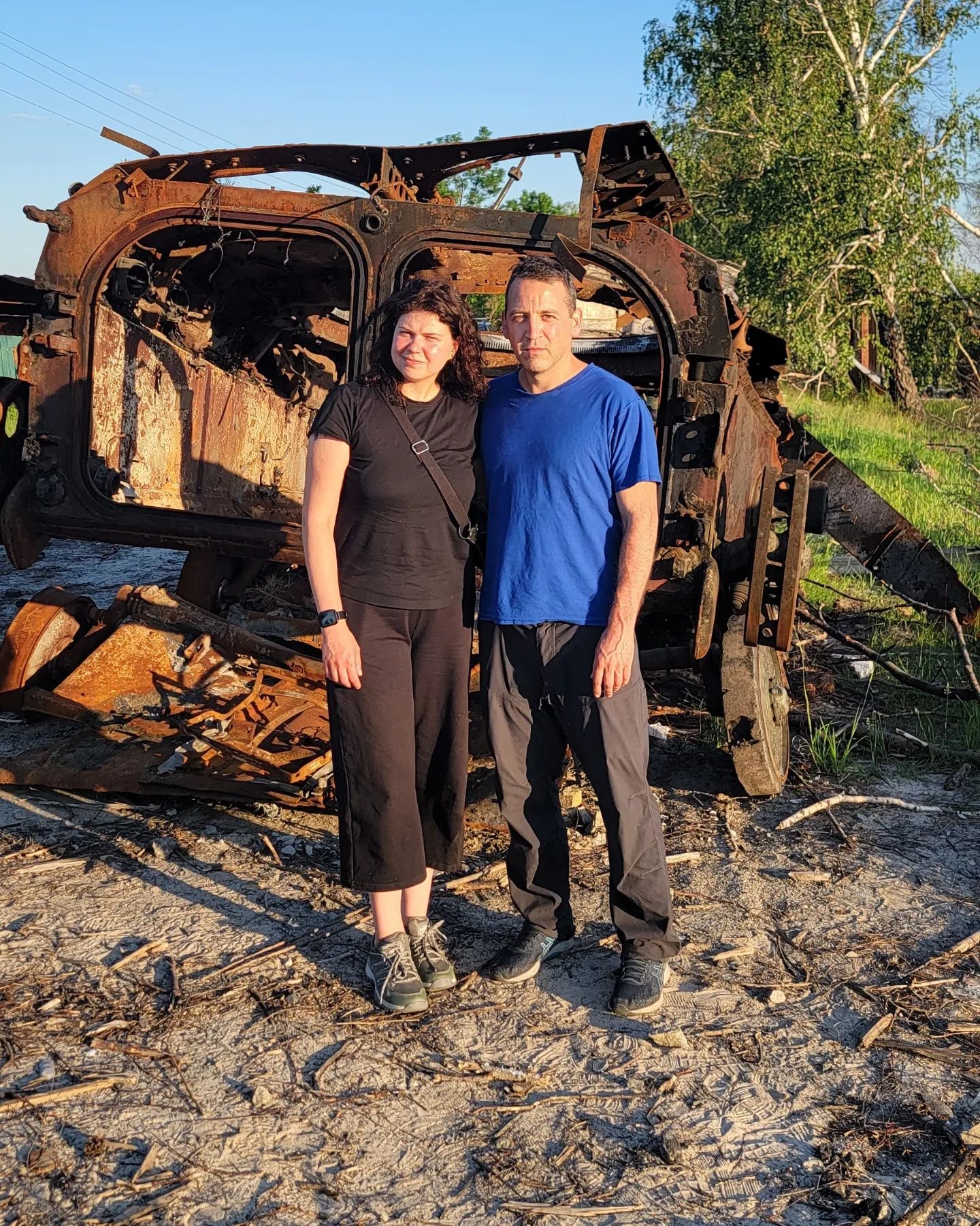
This rapid “call-and-response” mobilization became Trust Chain’s blueprint. The U.S. team secured donations through their network of white-collar professionals and high-net-worth donors. Ukrainian partners like Kalmus and Mitsuta put the money to work on the ground.
Since 2022, the U.S.-based operations team has channeled over $10 million, 100% of all donations raised, directly to 17 civilian-led volunteer groups across Ukraine. These groups have provided emergency services, supplies and carried out rebuilding efforts for over a million Ukrainians throughout the war, Cherkasskiy said.
Through it all, Cherkasskiy says the U.S.-based team accepted zero dollars for their time.
“We are only doing this because we wanted to do this.”
“They have a heart for this land.”
Things work differently for Ukraine-based teams. Russia’s 2022 invasion devastated the country’s economy, shrinking the national GDP by an estimated 30%. Approximately 4.5 million jobs were lost, leaving one in three Ukrainians unemployed. For many, unpaid work is unsustainable — unlike some international teams, local humanitarian workers often rely on these roles for their livelihood.
Since the full-scale invasion in 2022, humanitarian groups have proliferated in Ukraine — from massive United Nations agencies to scrappy volunteer networks like Trust Chain. The group’s partnerships with Ukrainian teams have endured with Cherkasskiy’s lean operating model, mutual trust and commitment built over the years.
“These guys are hands-on. They have their finger on the pulse,” said Pavlo Bilan, 51, volunteer lead of one of Trust Chain’s partner organizations, Step with Hope. The group is located in Dnipro, a southeastern Ukrainian city about 30 miles from the frontline. As a humanitarian and manufacturing hub, Dnipro is a frequent target for Russian airstrikes. From his office, Bilan points out the spot a missile had recently hit over the fence next door.
“Every time we had a rocket strike in the Dnipro area, straight away, [Trust Chain] would be on a call, what’s happening? What support do you need?” Bilan said.

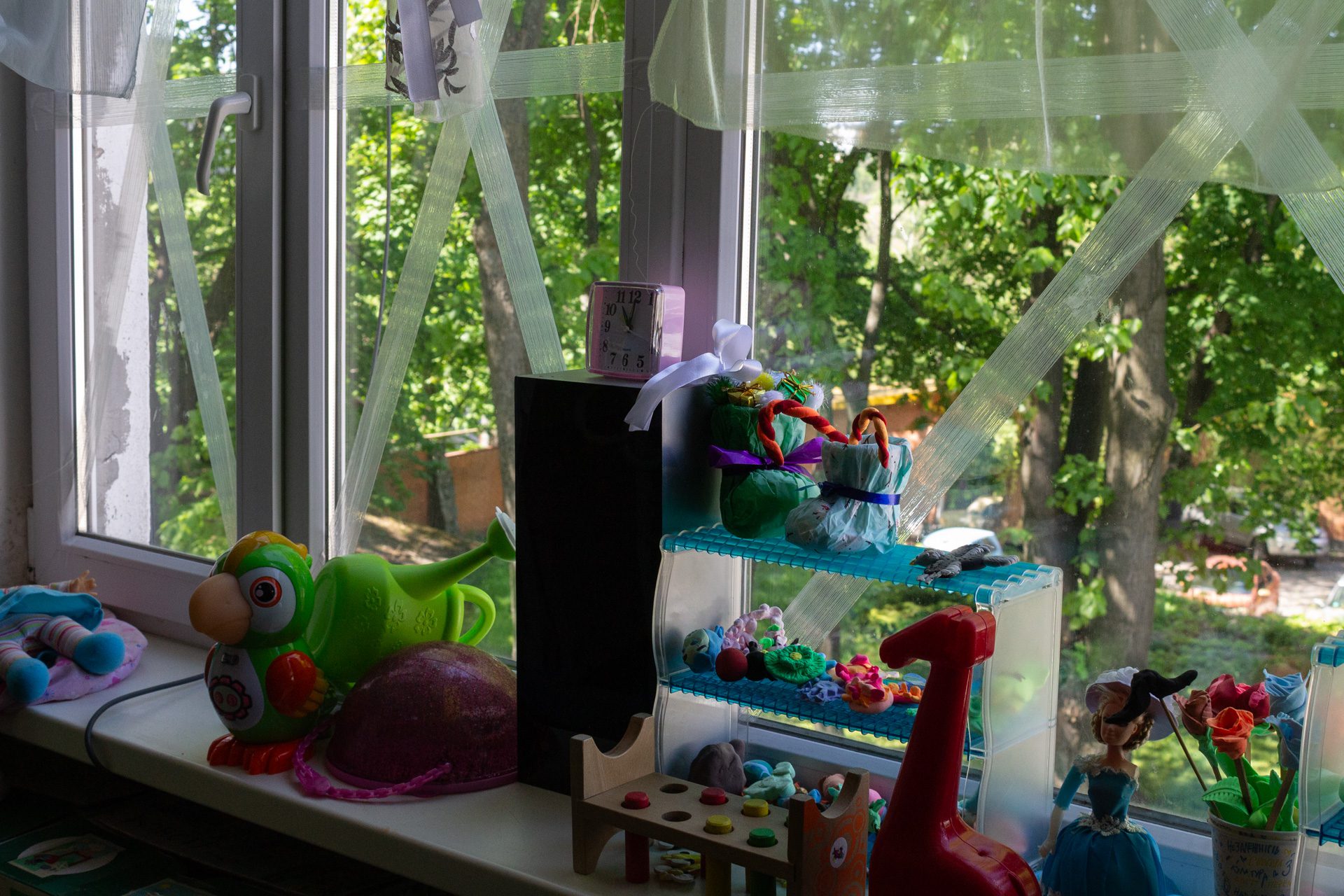
Step with Hope and all Trust Chain partner organizations spend every dollar on an evacuation mission or project, accounting for it through receipts and expenditure logs. Bilan said these logs keep the relationship accountable and healthy.
The Ukrainian-diaspora leadership’s cultural familiarity is also key to their success.
“They understand not only the language, they understand how people think and how people move, what makes them sad and what makes them happy and what makes people tick,” said Bilan.
One frequent pain point experienced with foreign aid workers for Bilan and other local teams is a mismatch between real and perceived needs on the ground, which they described as a band-aid approach to systemic issues. When Russian forces destroyed the Kakhovka Dam and flooded Kherson in June 2023, aid groups and media crews swarmed the city within hours, recounted Bilan. But they didn’t stay long.
“They want to make the appearance that [they]’re helping and they’re gone. Look, we had hundreds of visitors like that.” Bilan said. “After day three, most are gone.”
Yet much of the hard labor happened after the cameras left. Trust Chain funded Step with Hope’s team, who stayed for months of unglamorous cleanup. Volunteers pumped basements, ran industrial dryers, dealt with rat infestations and treated mold growth in homes.
“They have a heart for this land,” Bilan said.
Limits to Mutual Aid
National laws clearly define what nonprofits can and cannot do, with guidelines that volunteers must follow.
For example, American nonprofits cannot fund foreign militaries or donate supplies that could be repurposed for military use. UN organizations must stay neutral — no country flags can appear in their promotional materials. Despite following every legal safeguard, humanitarian workers still find a target on their backs.
Russian forces have killed aid workers in what Amnesty International investigations suggest are deliberate attacks since February 2022. The evacuations that groups like Trust Chain conduct from frontline villages grow more perilous each month, as Russian drones hunt civilian vehicles along escape routes.
Across Ukraine, nearly everyone knows at least one friend or family member killed by Russian attacks.
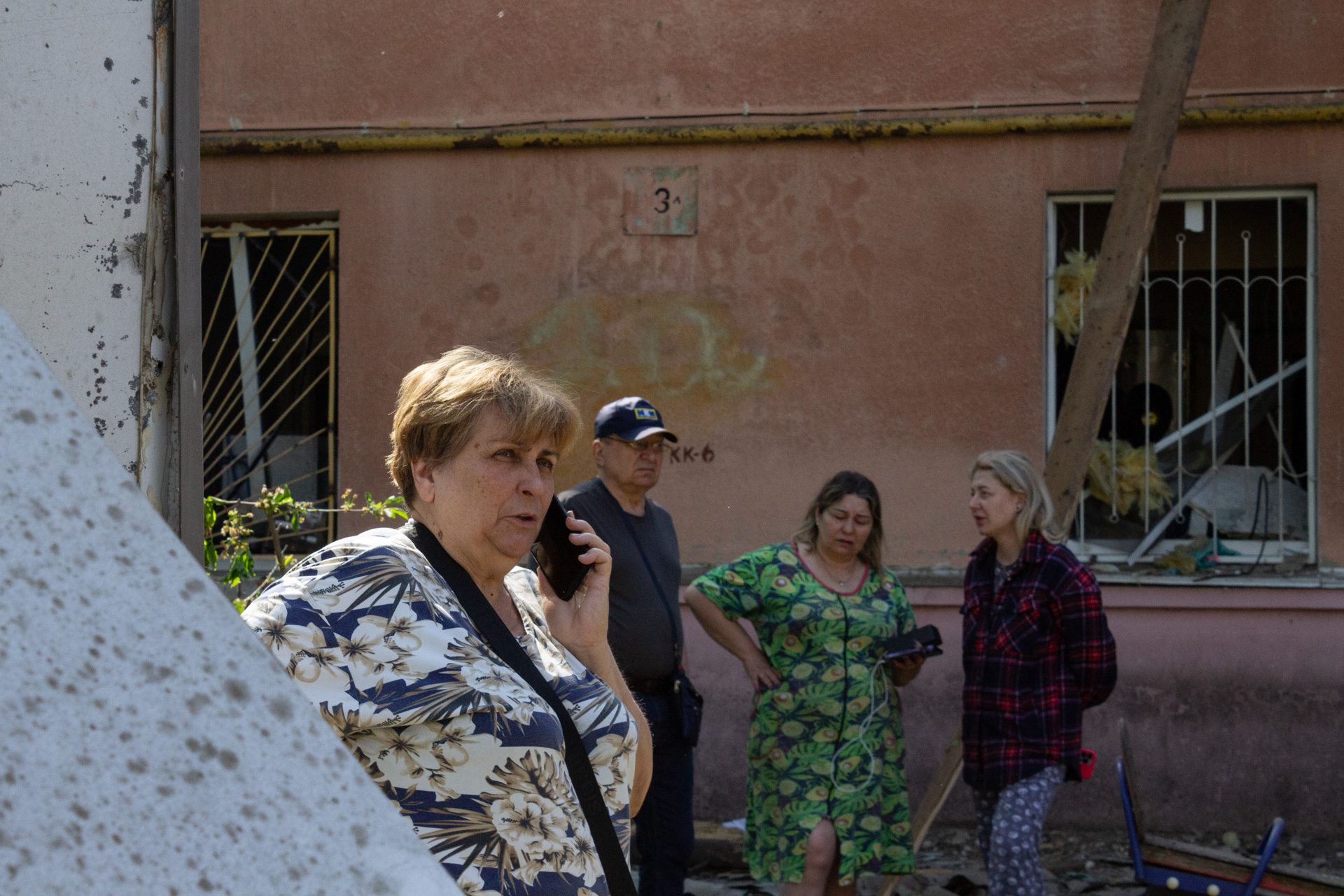
“They aim directly at us. They pay attention to us,” said Dmytro Myshenin, the founder of Angels of Salvation.
In the fall of 2024, Mitsuta lost one of her team members. A Russian drone killed a 27-year-old while he was distributing firewood in the Mykolaiv region.
“He didn’t have [a bulletproof vest] on because they thought there were no Russians nearby,” recounted Mitsuta.
U.S. law prohibits nonprofits from donating to people in combat, though there is no explicit law banning personal donations to foreign military personnel. As a 501(c)3, Ukraine Trust Chain maintains strict boundaries around funding military activities. But even this careful distance creates friction as Ukrainians seem more invested in military action.
The walls of Kyiv are plastered with posters advertising fundraisers for military aid, such as raves to sponsor specific army brigades, store discounts for active-duty soldiers and special clothing lines with a portion of proceeds going towards the military. Online, links to direct deposits of soldiers proliferate, featuring photos of the exact vehicle or drone system needing repair.
While foreign governments and donors have given millions to humanitarian aid in Ukraine, local fundraising efforts have partially shifted to support the military. According to Angels of Salvation, which operated with a budget of over $19 million in 2024, domestic donations to their humanitarian organization totaled just $20,000 in the three years since the full-scale invasion.
When the Buildings Get Bombed Again
When the invasion began, Kalmus split her time between humanitarian missions and military support, including procuring and donating supplies, medical kits and drone equipment to frontline units. But when Russian forces crossed the border again in May 2024 and bombed the Kharkiv region villages she’d been reconstructing, something broke inside her.
“I was angry and like they broke my heart. With what I was rebuilding, I gave my emotions. I loved those people. Love, loved the locals. We became friends,” she said.
After that, she saw no reason to focus on rebuilding or humanitarian missions altogether.
“Because this is not solving a problem. Drones solve the problem. I needed to find some project that will not be destroyed by [the Russian government],” she explained.

Throughout the summer of 2024, she studied at a drone school before launching KLYN Drones in August. Her new venture is what she calls “closing the loop.” When she can, she searches for the military units deployed in the same villages she helped rebuild with Trust Chain, and supplies them with drones.
“They hit the targets of the enemy in Russia, and in this way, they prevent shelling our villages that we had been rebuilding,” Kalmus said.
Her operation runs like a small factory. Kalmus recruited about three dozen volunteers who work in shifts of five to seven people, assembling frames, attaching motors and applying insulation. She said they’ve gotten so good at their work that they can put together 100 drone frames in four hours. While other volunteer organizations have cited burnout, Kalmus says she never lacks willing hands to help assemble drones.
KLYN Drones’ donors also receive updates on where their money goes, just like Trust Chain supporters, though the content is of a different nature. Thousands of small-dollar donors follow Kalmus’s regular stream of first-person drone footage soaring over buildings or tanks before detonating an explosion, paired with screenshots of the money transfers that made each hit possible. Between February and April 2025, Klamus rode the media splash that ensued from a viral interview between President Trump and Ukrainian President Volodymyr Zelensky, raising approximately $75,000 from foreign individual donors, mainly from the United Kingdom and Germany.
Meanwhile, watching his former partner give up on humanitarian work and switch to military operations was painful for Cherkasskiy.
“That hurt me, deeply,” he admitted. “[But] I understand it, I respect it, I totally support you, but it is a tragedy for me… It does make me feel like what we do is irrelevant.”
He still promotes Kalmus’s work on his personal social media. Trust Chain’s social media accounts regularly share updates about Kalmus’s military operations, even though the organization can’t legally support them financially.
Redefining Resistance
Three years of war have fundamentally changed the nature of volunteer work in Ukraine. The initial surge of foreign donations has slowed. What once felt urgent to Americans now struggles to maintain their attention, as the Trump administration’s bait-and-switch on military support to Ukraine fades into the background amid many other crises. The simple rescue operations of 2022 — get someone to a train, provide basic assistance and make it to safety on their own — have been replaced by situations with no one solution.
“It’s a totally different context, much harsher, much more tragic — just a [much] more complicated story,” Cherkasskiy said. The repetitive nature of fundraising has worn him and even the most dedicated volunteers down.
“After three years, where every week you get $2,000 to do this, it’s impossible to feel that this $2000 is [still] something special, you know, but it kind of takes the same effort to collect it,” he said.
The toll has been both physical and emotional. Mitsuta picked up a smoking habit during her long drives to the frontlines. Days of wearing a Kevlar vest and helmet on end have injured her back. Some volunteers have stepped away altogether.
“Many people burned out, many people, of course, moved on, tired and so on,” said Bilan, of Step for Hope.
Those who remain have learned to adapt their methods and community relationships to the work. Mitsuta has found ways to reclaim parts of her personal life. “The past three years are gone, and they are not coming back. I allow myself to enjoy life when I can,” she said, showing off her touched-up platinum blonde hair and gel manicure. “I buy new clothes. I go to karaoke with my friends.
Hardly a natural politician, Kalmus says her experience of becoming a public figure for KLYN Drones has made her more confident — and more cynical. “Before that, I was seeing life in dark or bright colors only. Now I see the gray,” she said.
Ukrainian military personnel tell Kalmus they’re exhausted and don’t have vacations, “but they said, like we will — this is our land — we will fight till the end, but we need the support.”
In Chicago, blue and yellow Ukrainian flags still wave from many two-flats. Cherkasskiy continues playing traditional Ukrainian folk songs in bars.
Early in the war, he pulled all-nighters for weeks and was ready to take out a second mortgage on his house to continue the work. Now, he is more honest about his limitations. He still sends monthly newsletters and takes every scheduled call with the Ukraine team. However, he is more skeptical of an aid industry that expects volunteers to maintain indefinite crisis-level engagement.
Cherkasskiy pragmatically describes his work as “like a sail.”
“It’s set. As long as there is wind, it’s going. But if the wind stops, it’s gonna stop.”
In their own way, Trust Chain partners in Ukraine remain committed to the efforts that started over three years ago.
As Mitsuta explained when everything began in February 2022: “I was here. I had my car. I had money. I can go.”
Today, volunteers still face the same fundamental choice — they’re here, they have resources, they can act. The only question is: how?
Wendy Wei is a contributing reporter for Borderless Magazine. Liubov Sholudko contributed reporting and translation support.


